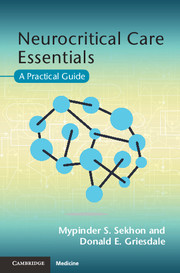Book contents
- Frontmatter
- Contents
- List of Contributors
- Foreword 1
- Foreword 2
- Acknowledgments
- List of Abbreviations
- Section 1 Fundamentals of neurocritical care
- Chapter 1 Neuroanatomy
- Chapter 2 Essential neurophysiology
- Chapter 3 Neurological examination
- Chapter 4 Neuroimaging
- Chapter 5 Neuromonitoring
- Section 2 Neurosurgical critical care
- Section 3 Neurological critical care
- Index
- References
Chapter 1 - Neuroanatomy
Published online by Cambridge University Press: 05 April 2015
- Frontmatter
- Contents
- List of Contributors
- Foreword 1
- Foreword 2
- Acknowledgments
- List of Abbreviations
- Section 1 Fundamentals of neurocritical care
- Chapter 1 Neuroanatomy
- Chapter 2 Essential neurophysiology
- Chapter 3 Neurological examination
- Chapter 4 Neuroimaging
- Chapter 5 Neuromonitoring
- Section 2 Neurosurgical critical care
- Section 3 Neurological critical care
- Index
- References
Summary
Overall structure and organization
The structure of the central nervous system (CNS) is organized into five distinct parts comprising the cerebrum, diencephalon (thalamus and hypothalamus), brainstem, cerebellum and spinal cord. There is a complex interplay of signals, which are transmitted among each component of the CNS to control consciousness, sensation, motor activity, autonomic nervous function and coordinate speech and movement.
Cerebrum
The cerebrum is composed of the cerebral hemispheres and processes the higher-order functions of the nervous system. It also supplies neuronal connections to nervous system outlets to the voluntary/involuntary muscles and diencephalon, and receives sensory inputs from the peripheral nervous system. The right and left cerebral hemispheres are separated by a central meningeal reflection called the falx cerebri. Posteriorly, the tentorium separates the cerebrum from the intratentorial compartment, which contains the cerebellum and brainstem. Crevices and folds of the cerebrum are referred to as sulci and gyri, respectively. Anatomical boundaries formed by sulci divide the cerebrum into four lobes: frontal, parietal, occipital and temporal. The central sulcus forms the boundary between the frontal and parietal lobes, whereas the Sylvian fissure separates the frontal/parietal lobes from the temporal lobe. The occipital lobe is located posterior to the parietal.
Interhemispheric connections are formed by the corpus callosum, genu and splenium. Deep within the cerebral hemispheres, cavities form the lateral ventricles of the ventricular system, which subsequently drain into the 3rd ventricle.
- Type
- Chapter
- Information
- Neurocritical Care EssentialsA Practical Guide, pp. 1 - 9Publisher: Cambridge University PressPrint publication year: 2015



